Intro
Learn the 5 key blood sugar targets to manage diabetes, including normal glucose levels, HbA1c goals, and healthy glycemic control, to prevent complications and achieve optimal diabetic care and glucose monitoring.
Maintaining healthy blood sugar levels is crucial for overall well-being, particularly for individuals with diabetes or those at risk of developing the condition. Blood sugar targets are specific ranges that healthcare professionals recommend to ensure optimal glucose control. Understanding these targets is essential for managing diabetes effectively and preventing complications. In this article, we will delve into the importance of blood sugar targets, their benefits, and provide practical guidance on achieving and maintaining them.
The significance of blood sugar targets cannot be overstated. When blood sugar levels are within the recommended range, the risk of diabetes-related complications, such as heart disease, kidney damage, and nerve damage, is significantly reduced. Furthermore, maintaining healthy blood sugar levels can improve overall quality of life, increase energy levels, and enhance cognitive function. Therefore, it is essential to understand the different blood sugar targets and how to achieve them.
Achieving and maintaining healthy blood sugar targets requires a comprehensive approach that includes a balanced diet, regular physical activity, and, if necessary, medication. By working closely with healthcare professionals and making informed lifestyle choices, individuals can effectively manage their blood sugar levels and reduce the risk of diabetes-related complications. In the following sections, we will explore the different aspects of blood sugar targets, including their benefits, working mechanisms, and practical tips for achieving and maintaining them.
Understanding Blood Sugar Targets
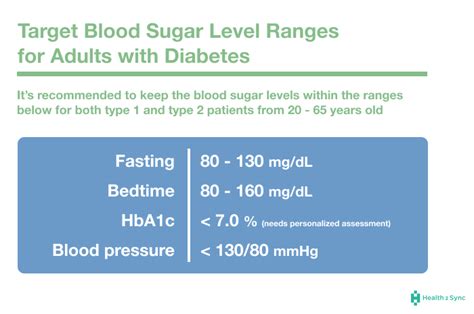
Understanding blood sugar targets is crucial for effective diabetes management. The American Diabetes Association (ADA) recommends the following blood sugar targets for individuals with diabetes:
- Fasting blood sugar: 80-130 mg/dL
- Before meals: 70-130 mg/dL
- After meals: Less than 180 mg/dL
- Hemoglobin A1c (HbA1c): Less than 7%
These targets may vary depending on individual factors, such as age, health status, and the presence of other medical conditions. It is essential to work closely with healthcare professionals to determine the most appropriate blood sugar targets and develop a personalized plan for achieving and maintaining them.
Benefits of Achieving Blood Sugar Targets
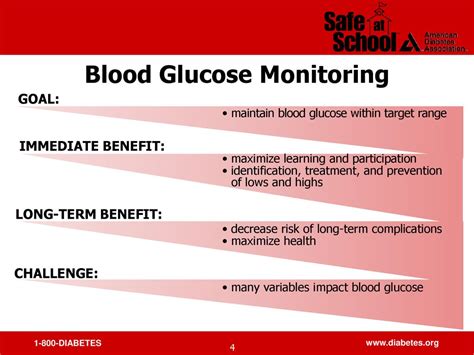
Achieving and maintaining blood sugar targets has numerous benefits, including:
- Reduced risk of diabetes-related complications, such as heart disease, kidney damage, and nerve damage
- Improved overall quality of life
- Increased energy levels
- Enhanced cognitive function
- Better wound healing
- Reduced risk of infections
By maintaining healthy blood sugar levels, individuals can reduce their risk of developing these complications and improve their overall health and well-being.
Working Mechanisms of Blood Sugar Targets
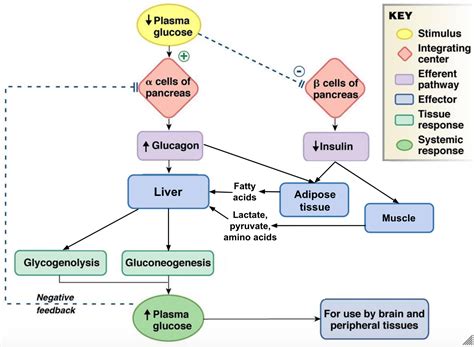
Blood sugar targets work by providing a framework for managing blood sugar levels. By maintaining blood sugar levels within the recommended range, individuals can reduce their risk of diabetes-related complications and improve their overall health. The working mechanisms of blood sugar targets involve:
- Monitoring blood sugar levels regularly
- Adjusting diet and physical activity accordingly
- Taking medication as prescribed
- Regularly reviewing and adjusting the treatment plan with healthcare professionals
By understanding how blood sugar targets work, individuals can take a proactive approach to managing their diabetes and reducing their risk of complications.
Steps to Achieve Blood Sugar Targets
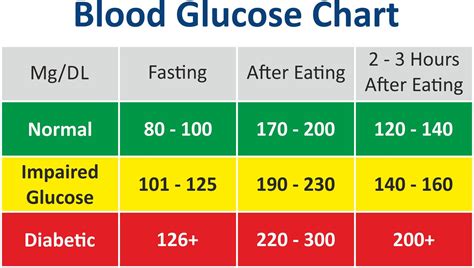
Achieving and maintaining blood sugar targets requires a comprehensive approach that includes:
- Monitoring blood sugar levels: Regularly checking blood sugar levels to understand how different factors, such as diet and physical activity, affect blood sugar levels.
- Eating a balanced diet: Consuming a diet rich in whole foods, such as fruits, vegetables, whole grains, and lean proteins, to help regulate blood sugar levels.
- Engaging in regular physical activity: Participating in regular physical activity, such as walking or other aerobic exercises, to improve insulin sensitivity and reduce blood sugar levels.
- Taking medication as prescribed: Taking medication as directed by healthcare professionals to help regulate blood sugar levels.
- Staying hydrated: Drinking plenty of water to help regulate blood sugar levels and prevent dehydration.
By following these steps and working closely with healthcare professionals, individuals can achieve and maintain their blood sugar targets and reduce their risk of diabetes-related complications.
Practical Tips for Maintaining Blood Sugar Targets
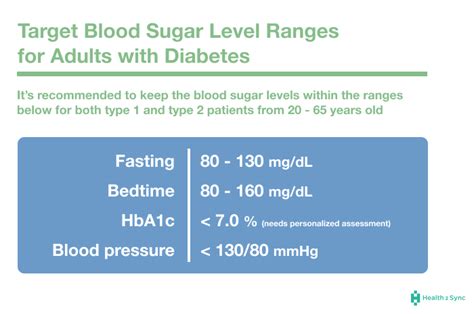
Maintaining blood sugar targets requires a long-term commitment to healthy lifestyle choices. Here are some practical tips to help individuals maintain their blood sugar targets:
- Keep a food diary: Record food intake and blood sugar levels to understand how different foods affect blood sugar levels.
- Develop a meal plan: Create a meal plan that includes a balance of whole foods and takes into account individual calorie and nutrient needs.
- Stay physically active: Engage in regular physical activity, such as walking or other aerobic exercises, to improve insulin sensitivity and reduce blood sugar levels.
- Get enough sleep: Aim for 7-8 hours of sleep per night to help regulate blood sugar levels and improve overall health.
- Manage stress: Engage in stress-reducing activities, such as meditation or yoga, to help manage stress and reduce blood sugar levels.
By following these practical tips and working closely with healthcare professionals, individuals can maintain their blood sugar targets and reduce their risk of diabetes-related complications.
Common Challenges and Solutions

Maintaining blood sugar targets can be challenging, and individuals may encounter various obstacles along the way. Here are some common challenges and solutions:
- Challenge: Irregular meal times Solution: Develop a meal plan that includes regular meal times and healthy snacks to help regulate blood sugar levels.
- Challenge: Lack of physical activity Solution: Engage in regular physical activity, such as walking or other aerobic exercises, to improve insulin sensitivity and reduce blood sugar levels.
- Challenge: Stress and anxiety Solution: Engage in stress-reducing activities, such as meditation or yoga, to help manage stress and reduce blood sugar levels.
By understanding common challenges and solutions, individuals can proactively address obstacles and maintain their blood sugar targets.
Conclusion and Next Steps

In conclusion, achieving and maintaining blood sugar targets is crucial for effective diabetes management. By understanding the benefits, working mechanisms, and practical tips for achieving and maintaining blood sugar targets, individuals can reduce their risk of diabetes-related complications and improve their overall health and well-being. We encourage readers to take the next step by consulting with their healthcare professionals to develop a personalized plan for achieving and maintaining their blood sugar targets. Share this article with friends and family to help spread awareness about the importance of blood sugar targets, and comment below with any questions or concerns.
What are the recommended blood sugar targets for individuals with diabetes?
+The American Diabetes Association (ADA) recommends the following blood sugar targets for individuals with diabetes: Fasting blood sugar: 80-130 mg/dL, Before meals: 70-130 mg/dL, After meals: Less than 180 mg/dL, Hemoglobin A1c (HbA1c): Less than 7%.
How can I achieve and maintain my blood sugar targets?
+Achieving and maintaining blood sugar targets requires a comprehensive approach that includes monitoring blood sugar levels regularly, eating a balanced diet, engaging in regular physical activity, taking medication as prescribed, and staying hydrated.
What are the benefits of achieving and maintaining blood sugar targets?
+Achieving and maintaining blood sugar targets has numerous benefits, including reduced risk of diabetes-related complications, improved overall quality of life, increased energy levels, enhanced cognitive function, better wound healing, and reduced risk of infections.
